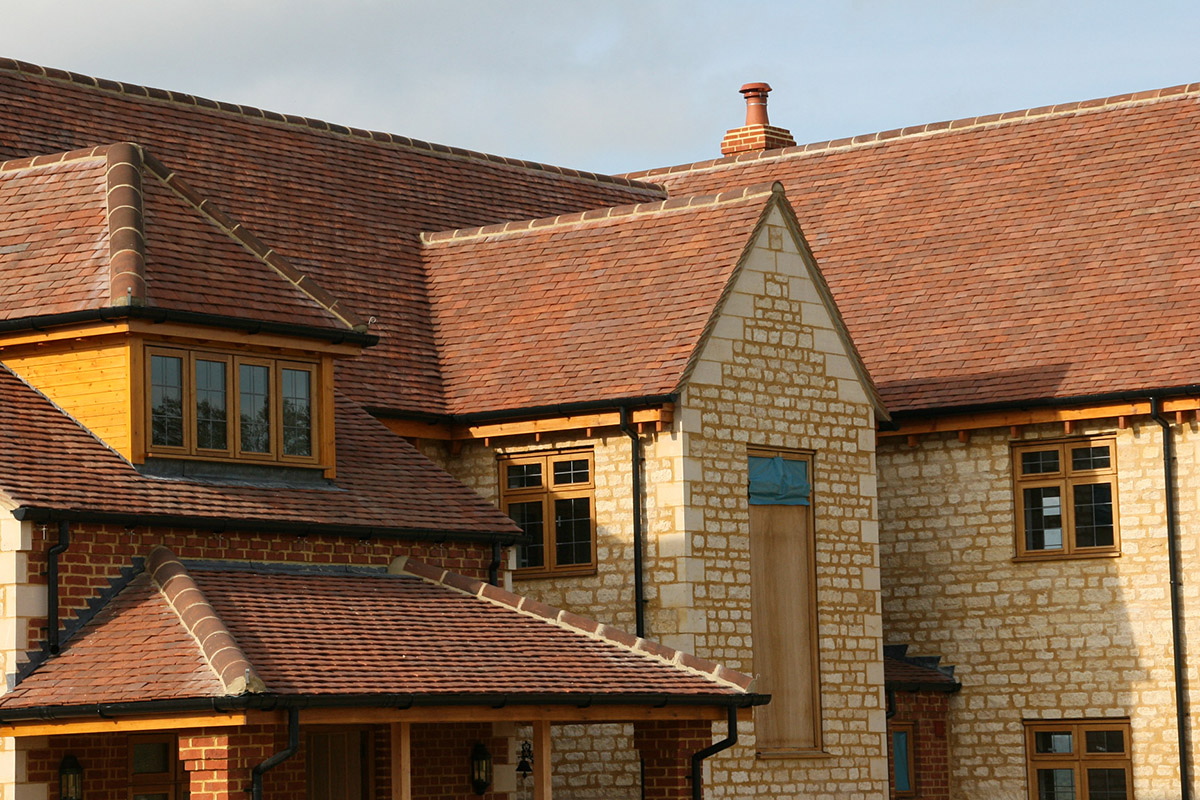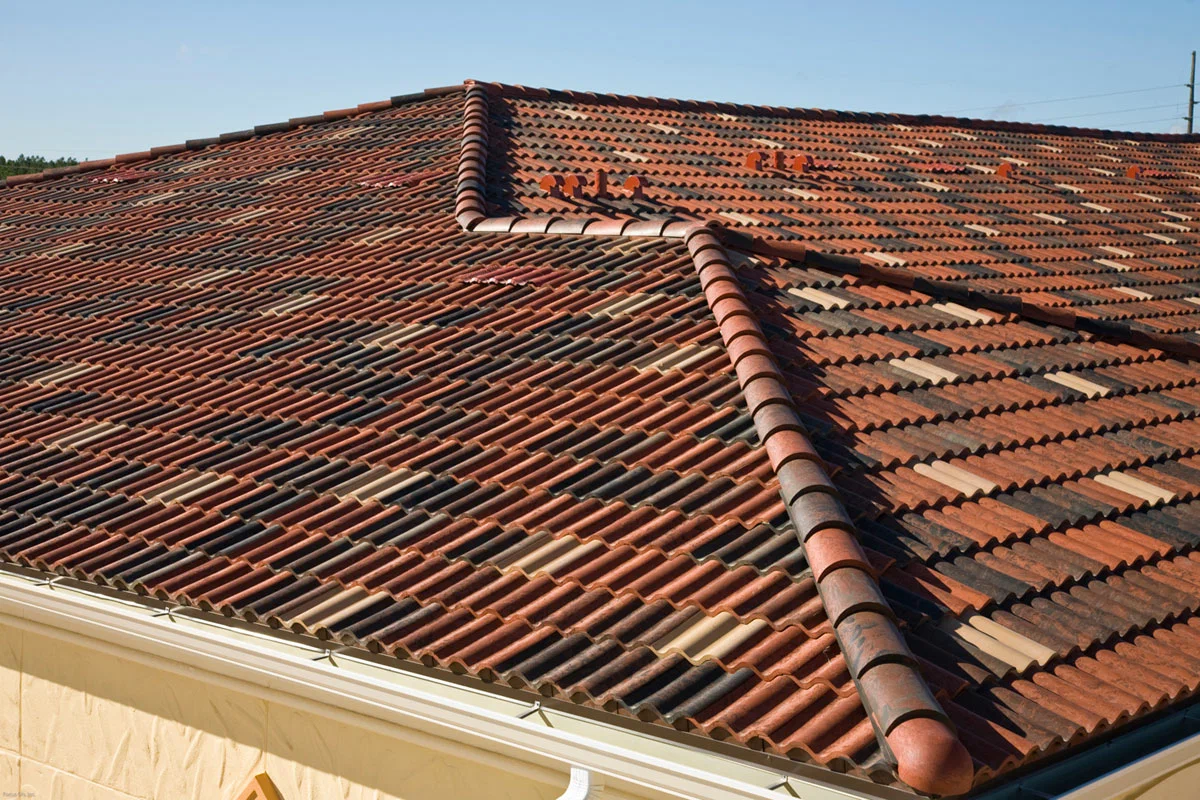Roof may seem a little odd for tiles, but historic clay type can be laid there very well. The preservation and repair with a fresh perspective and style can be at hand for any user of clay tiles.
Due to the wide range of shapes, colors, profiles, patterns, and textures that clay tiles come in, they are one of the most recognizable and aesthetically pleasing historical roofing materials.
Clay tiles have historically been shaped by hand, and later by machine, before being colored, textured, and fired at high temperatures. A clay tile roof is frequently a major aspect in defining the overall character of a historic structure due to its distinctive visual characteristics.
Historic tile roofs must be preserved and repaired with extra care because of their importance and intrinsically delicate nature.
Among historical roofing materials, clay tile has one of the longest life expectancies, typically lasting several hundred years. However, any roofing system must have a routine maintenance program to extend its life.
To evaluate condition, probable reasons of failure, or source of leaks, a thorough internal and exterior inspection of the roof structure and the roof covering is advised. This will aid in designing a program for the preservation and repair of the tile roof.

Prior to beginning any repairs on old clay tile roofs, it’s necessary to determine which characteristics are crucial to maintaining the building’s historic relevance and character.
In addition to reviewing the development of clay roofing tiles, this brief will give an overview of their various varieties, forms, and fastening techniques.
It will conclude with general advice on how to design and carry out a project including the repair and selective replacement of historic clay roofing tiles for the owner or building management of a historic property. Historic clay tile roof repair is not a task for novices; only qualified roofers with experience in working with clay tile roofs should attempt it.
Historical Perspective
Clay roofing tiles can be independently linked to two distinct historical periods: the Neolithic Age in China, which began approximately 10,000 B.C., and the Middle East, which followed shortly after.
The usage of clay tiles extended from these areas to Asia and Europe. Buildings were covered in clay tiles not only by the ancient Egyptians and Babylonians but also by the Greeks and Romans, and variations of this tradition may still be found in Europe today. This roofing custom was introduced to America by European settlers, where it was widespread by the 17th century.
Clay roofing tile samples from Roanoke Island in North Carolina’s colonization in 1585 have been found by archaeologists. Early English settlements in Jamestown, Virginia, and adjacent St. Mary’s, Maryland, also used clay tile. Additionally, clay roofing tiles were utilized by the French and Spanish at New Orleans as well as the Spanish town of St. Augustine in Florida.

Clay tiles were first brought from Holland by Dutch immigrants on the east coast. In the upper Hudson River Valley, they had created their own extensive clay tile production by 1650, and they were exporting tiles to New Amsterdam.
Around the time of the American Revolution, there were a number of tile manufacturing businesses operating in the New York City region as well as the nearby state of New Jersey, providing both colored and glazed tile as well as unglazed natural terra-cotta tile.
An advertisement for locally produced, glazed and unglazed pantiles that were promised to “stand any weather” appeared in a New York newspaper in 1774. Clay tile was initially produced in wooden molds on the west coast in 1780 at Mission San Antonio de Padua in California by Indian novices working under the guidance of Spanish missionaries.
The fear of fire was by far the most important reason in the colonial period of America in popularizing clay roofing tiles. Building and fire codes were first established in New York and Boston as a result of devastating disasters that occurred in London in 1666 and Boston in 1679.
Due to its fireproof properties, these fire codes, which were in place for almost two centuries, promoted the use of tile for roofing, particularly in metropolitan areas. Due to its resilience, ease of maintenance, and lack of heat conductivity, clay roofing tile was also favored.
Clay tile’s price had decreased because to more effective manufacturing techniques, but throughout the second quarter of the 19th century, its use started to dwindle over much of the northeastern United States.
Wood shingles were commonly utilized in most places outside of city-designated fire districts since they were more affordable, more lighter, and required less expensive and substantial roof framework.

In addition, new fire-resistant roofing materials including slate and metals like copper, iron, tinplate, zinc, and galvanized iron were becoming accessible.
The installation costs and weight of many metal roofing materials are significantly lower than those of clay tiles. By the 1830s, clay roofing tiles had temporarily lost favor in many regions of the nation, and even their aesthetics were no longer in vogue.
Interest in Clay Roofing Tiles is Rekindled by Revival Styles
By the middle of the 19th century, the American Italianate Villa architectural style had arrived, sparking a renewed interest in clay roofing tiles. As a result, the production of clay tiles was revived, and by the 1870s, new manufacturers were operating, including sizable ones in Baltimore, Maryland, and Akron, Ohio.
The Centennial Exhibition in Philadelphia in 1876, which featured a number of notable structures with tile roofs, including a pavilion for the state of New Jersey roofed with clay tiles made locally, served to promote clay tiles.
The first tile-making machines were patented in the 1870s, and although a lot of roofing tile was still created by hand by the 1880s, industries were starting to use machines more frequently. Clay roofing tiles’ status as an American building material was further enhanced by the rise of the Romanesque Revival architectural movement in the 1890s.
To satisfy this growing demand, other replacements for clay tiles were also required. Sheet metal roofing with patterns modeled after clay tile designs started to appear from 1855.
These sheet metal roofs, which are typically painted a natural terra cotta hue to resemble genuine clay tile, gained popularity because they were less expensive, lighter, and simpler to install than clay tile roofs.
In the 20th century, clay tile roofing and similar alternative roofing materials remain popular, particularly in the South and West, most notably Florida and California, where architecture with Mediterranean and Spanish influences is still prevalent.
Press contact button to start a prosperous business.











Your comment submitted.